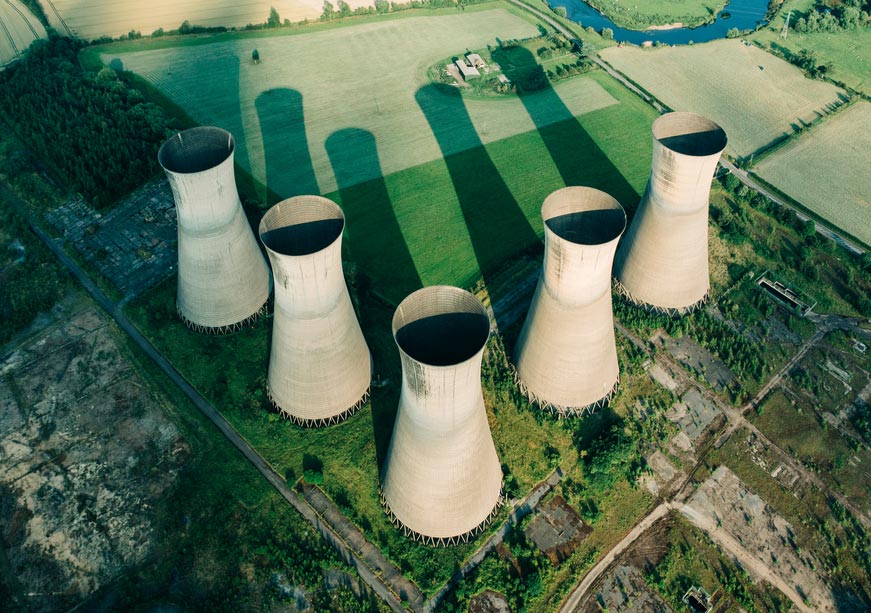-
CENTRES
Progammes & Centres
Location
Counterfeit goods in the nuclear supply chain pose a significant threat to security, necessitating more robust measures within India’s nuclear policies to address the issue effectively.

Image Source: Getty
India's nuclear establishment has always preferred to function behind a thick veil. While its network of associations is well-known, the establishment’s inner workings are often less transparent. The opaqueness is attributed to protecting national security. However, the same opaqueness does have a major drawback. The lack of transparency in supply chains, vendor processes, and certifications can lead to an increase in counterfeit goods that may hamper the function of such facilities. Often dubbed Counterfeit or Fraudulent Substitution Items (CFSIs),[1] these goods pose a significant threat to the safety of nuclear systems, structures, components and devices. Whether their presence is due to negligence from archaic certification systems or malicious infiltration, the consequences can be catastrophic.
So far, India has not experienced any case attributed to CFSIs in the nuclear supply chain. However, there have been other cases from which India has learnt. In 2020, India witnessed a blast in the Boiling Water Reactors (BWRs) of its oldest nuclear power plant, the Tarapur Atomic Power Station (TAPS). This blast was attributed to cracks in the BWR that were installed in 1969. The age of the reactors, alongside the lack of upkeep, contributed to the incident. The new materials, which are to be sourced from Italy, have still not been received, so the TAPS functioning is still on hold. This incident has highlighted not only the need for better maintenance but also the need to increase indigenous reliance and ensure the longevity of materials in the nuclear supply chain.
In 2020, India witnessed a blast in the Boiling Water Reactors (BWRs) of its oldest nuclear power plant, the Tarapur Atomic Power Station (TAPS). This blast was attributed to cracks in the BWR that were installed in 1969.
Globally, too, there have been cases highlighting a need for greater stringency in monitoring and deterring CSFIs, many of which have been listed by Hobbs et al. in their report on CFSIs. Between 2006 and 2007, the United States (US) government recalled counterfeit switch breakers in their nuclear supply chain on three occasions. While nothing happened, many counterfeit goods being produced highlighted the need to upgrade policies addressing CSFIs.
India’s approach to monitoring and regulating the nuclear supply chain is well-woven. One of the central bodies here is the Atomic Energy Regulatory Board (AERB). The AERB, by employing safety codes on nuclear power plants, ensures quality and safety from manufacturing to installation. The AERB also interacts with other government bodies, like the Bureau of Industry Standards (BIS), to ensure quality assurance. Another essential government body is the Nuclear Power Corporation of India Limited (NPCIL), which plays a crucial role in overseeing the prevention of CFSIs. Its main power in overseeing and monitoring nuclear power plants and facilities is to ensure that they adhere to safety standards, supported by rules, guidelines, and standards to ensure that nuclear materials, systems, and components meet the highest quality requirements.
While India is interested in becoming indigenous for its manufacturing and production of critical goods, the reliance on global supply chains cannot be disconnected overnight.
Despite the impact made by these government organisations, the policies overseeing nuclear supply chain governance still have some gaps and challenges. One such challenge is the dependence on international trade. While India is interested in becoming indigenous for its manufacturing and production of critical goods, the reliance on global supply chains cannot be disconnected overnight. Components and materials sourced from overseas could be vulnerable to substandard manufacturing or counterfeit practices. Ensuring the authenticity of imported parts is difficult, especially when they pass through multiple vendors and intermediaries. This highlights the second significant gap, the lack of certifications and regular audits. While the above government bodies offer contracts to reliable bidders, the lack of supplier audits, third-party audits, and regular certification processes decreases the reliability of materials sourced and assurances of the material's longevity. Further, India has thus far not scaled its nuclear forensics[2] and counterfeit detection technologies and cybersecurity measures, adding more vulnerabilities to this supply chain.
The Indian defence establishment highlights its protocols for responsible acquisition through the Defence Acquisition Procedure (DAP). It is updated regularly to reflect changing defence requirements, technological advancements, and strategic priorities. The DAP, however, does not directly concern nuclear facilities. Quality assurance and CFSIs are primarily under the mandate of the NPCIL, as mentioned earlier. Thus, the NPCIL is a prime candidate requiring reforms. It must include the following recommendations in an explicit approach to CSFIs laid out similarly to the DAP:
The global defence industry is not immune to the risks of counterfeit products, and India’s defence procurement system must evolve to address this vulnerability. While the DAP has been vital for ensuring fair and transparent procurement practices, it lacks specific provisions to prevent counterfeit items from entering the nuclear supply chain. India would benefit from expanding its approach to CFSIs and adopting guidelines akin to the DAP, including enforceable guidelines on certification, reporting methods, and collaboration, to ease counterfeit detection and attribution.
Shravishtha Ajaykumar is an Associate Fellow with the Centre for Security, Strategy and Technology at the Observer Research Foundation.
[1] CFSIs refer to any items or materials introduced into the supply chain that are intentionally or unintentionally misrepresented as conforming to specifications, standards, or regulations.
[2] Forensic methods to detect radiation, leaks and damage in nuclear materials, to enhance security.
The views expressed above belong to the author(s). ORF research and analyses now available on Telegram! Click here to access our curated content — blogs, longforms and interviews.

Shravishtha Ajaykumar is Associate Fellow at the Centre for Security, Strategy and Technology. Her fields of research include geospatial technology, data privacy, cybersecurity, and strategic ...
Read More +